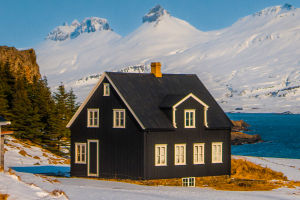Paradise in the Cook Islands
The Cook Islands, a collection of 15 islands in the South Pacific, offer a breathtaking blend of lush landscapes, crystal-clear waters, and vibrant marine life.
Ideal for travelers seeking both adventure and relaxation, this tropical paradise is known for its stunning coral reefs, rich Polynesian culture, and the sense of remoteness that allows for true immersion in nature.
Getting There
Most international flights arrive at Rarotonga, the largest island in the Cook Islands. Rarotonga International Airport connects with major hubs like Auckland, New Zealand, with direct flights that take around 3-4 hours. From there, visitors can explore other islands by domestic flights or ferries. Prices for flights to Rarotonga typically range from $600-$1,200 USD, depending on the season and starting location. Domestic flights to neighboring islands, like Aitutaki, are available from $150 USD.
Exploring Rarotonga and Aitutaki
Rarotonga – The island of Rarotonga offers a variety of activities, from snorkeling and diving in Muri Lagoon to hiking the Cross-Island Track, which provides panoramic views from the island’s highest peaks. Rarotonga’s vibrant market, Punanga Nui, is open every Saturday, offering locally made crafts, fresh produce, and traditional foods. This bustling market is a great way for Lykkers to experience local life and pick up unique souvenirs.
Aitutaki – Aitutaki, known for its stunning lagoon, is one of the most photographed locations in the world. The lagoon is dotted with small, uninhabited islands that can be explored on a lagoon tour, which typically costs around $120 USD. For a more private experience, travelers can also book exclusive trips to enjoy the serene sandbars and clear turquoise waters.
Marine Life and Coral Reefs
The waters surrounding the Cook Islands are teeming with marine life, making it a top destination for snorkeling and diving enthusiasts. The reef systems around Rarotonga and Aitutaki are home to colorful coral, tropical fish, and occasional sightings of sea turtles. Popular diving spots, such as the Avaavaroa Passage and Matavera Reef, offer diving experiences for all skill levels. Equipment rentals are widely available, with snorkeling gear costing around $10 USD per day.
Entry Fees and Permits
Access to the beaches and lagoons is generally free, though some organized tours and activities have entry fees. Marine conservation fees may apply for protected areas, typically around $5-$10 USD, helping support local conservation efforts.
Accommodation Options
The Cook Islands offer a wide range of accommodation options, from budget-friendly guesthouses to luxurious beach resorts. Prices for accommodation vary, with budget options starting at around $60 USD per night, while high-end resorts range from $250-$800 USD per night. For an eco-friendly experience, some accommodations emphasize sustainability, with minimal environmental impact and locally sourced amenities.
Best Time to Visit
The Cook Islands enjoy a tropical climate year-round. However, the ideal time to visit is during the dry season, from April to October, when temperatures are cooler and rainfall is less frequent. This period is also perfect for outdoor activities, from hiking to water sports, ensuring Lykkers can fully immerse themselves in the natural beauty of the islands.
Unique Experiences
Cultural Shows – Visitors can enjoy traditional dance performances and music that showcase Polynesian heritage. Some resorts and local venues host these events, often including buffet dinners with local delicacies.
Night Markets – In addition to the Saturday market, some villages hold night markets, featuring a range of local dishes and handmade crafts.
Whale Watching – From July to October, humpback whales migrate through the Cook Islands. Guided whale-watching tours offer a chance to see these majestic creatures up close.
Practical Tips for Lykkers
Currency: The local currency is the New Zealand Dollar (NZD).
Language: English and Cook Islands Māori are widely spoken.
Transportation: Renting scooters or bicycles is a popular option for getting around Rarotonga.
Environmental Responsibility: Visitors are encouraged to respect marine life and avoid touching or disturbing coral reefs.


